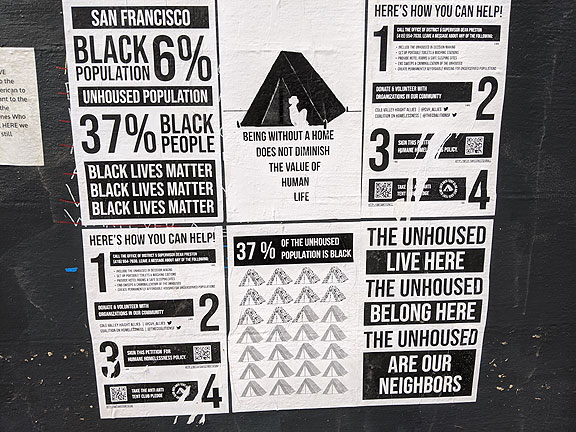
The impending Civil War I alluded to in the latter paragraphs in my last post looms ever closer. Apparently Fox TV’s Tucker Carlson wasted no time in defending the 17-year-old murderer in Kenosha Wisconsin as the victim, and his victims as casualties of a riot, a twisting of reality that will be so heavily amplified by the right-wing echo chamber that it’s not hard to imagine the dude getting acquitted by a jury and turned into a martyr for the burgeoning fascist movement. Today’s Guardian had a long article about a retired FBI agent’s investigation into the penetration of police forces by white supremacists and how little is being done to analyze, track, or confront this. Assuming that the majority of the population is actually sick of this racist authoritarianism and will vote out Trump (even if Biden is such a weak-tea version of most of the same values), the heavily armed supporters of deeply embedded white supremacy are very likely to rise up and start shooting if they think Trump has lost—which they define as the end of life as they know it (if only!) … Then what?
I was genuinely thrilled to see the NBA go on strike yesterday, and sympathize with how difficult it must be for them to formulate their next steps. (And kudos to the Giants and Dodgers, and the other 4 baseball teams who struck last night in solidarity.) Professional athletes’ entire leverage rests on playing or being ready to play. If NBA players strike and end the playoffs and the season, and likely by extension the collective bargaining agreement with the billionaire owners of NBA franchises, where will that leave them? Not in the spotlight they’ve been trying to use, not with the ongoing leverage over the sport they currently have. Could a mass spectator sport be destroyed by player action? So many interesting questions lurk in this moment. As I write, it seems the majority of pro basketball players have decided to continue their playoffs in their Orlando bubble, but some of the biggest stars apparently were advocating ending the season here and now. NBA players haven’t been as politically assertive as the women of the WNBA, but have been far more politicized than athletes in other sports, and they enjoy a long history to draw on.
While this latest outrage of racist police violence has grabbed our attention for the past few days, in San Francisco the more prosaic process of making the city’s budget has unfolded in the Supervisors’ Budget Committee. Mayor London Breed, who never hesitates to use the race card to silence critics or to rally support, loudly promised some weeks ago to reduce the overall budget for the police and sheriff by some $120 million over two years ($40 million each year from SFPD), and to move that money to bolster programmatic spending in the African American community… on closer scrutiny during the committee hearings, it turns out to have been a lie. She only proposed to reduce the budget by $18M, 2.6% from last year. Worse, during these minor reductions, she secretly held meetings with the (extremely right-wing) police union (the SF Police Officers Association) in which she promised them substantial wage increases in future years. After several public sessions lasting upwards of 12 hours, with hundreds of public comments by WebX, nearly unanimously in favor of major cuts and divestment from existing models of policing, the Budget Committee voted to make some reductions, but nothing as dramatic as the times would seem to call for.
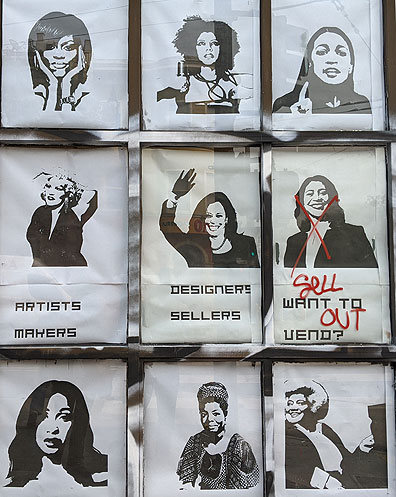
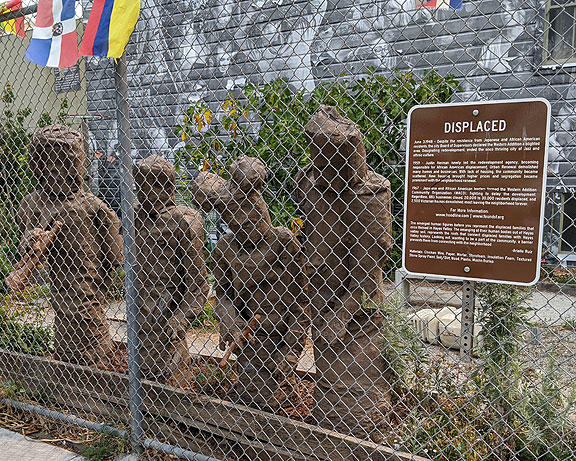
With a Black Mayor who regularly touts her bonafides when it comes to taking care of the Black community, you might expect to see her taking a more aggressive approach to the police budget and policing in general (her own sibling is languishing in jail after all). But what we see unfolding in San Francisco has been foretold not only here (during Willie Brown’s tenure 1996-2003, when the black population fell precipitously and he was quoted saying if you don’t make $50,000/year maybe you don’t belong in San Francisco—that average salary has nearly doubled since then) and in many other cities across the U.S. where black politicians have taken power. In A People’s History of Detroit, the co-authors make the point:
The problem is rather that black urban regimes (those led by black mayors and majority black city councils) operate “in a local political culture and system dominated hegemonically by the imperatives of the very ‘growth machine’ that is the engine of black marginalization.” (quoting Adolph Reed, Jr., p. 197)
Going back to the mid-1960s, San Francisco’s ruling class, the holders of Big Capital, has forged alliances with organized labor, the black community, the Mission Coalition Organization, Chinatown organizers, the LGBTQ community, etc. to maintain a priority commitment to “economic growth” as driven by private business as the overriding organizing principal of city politics. Whoever has become mayor over the years, whatever their stated intentions to enact progressive legislation, has deferred to the interests of the city’s dominant corporations and wealthy individuals, and especially the real estate industry and its ardent supporters among the Building Trades. We’ve had two Black mayors, a Chinese mayor, and two different female mayors, but the basic direction of City politics has been consistent and unchanging, leading inexorably to the extremely polarized reality of absurd wealth amidst shocking poverty that we have today.
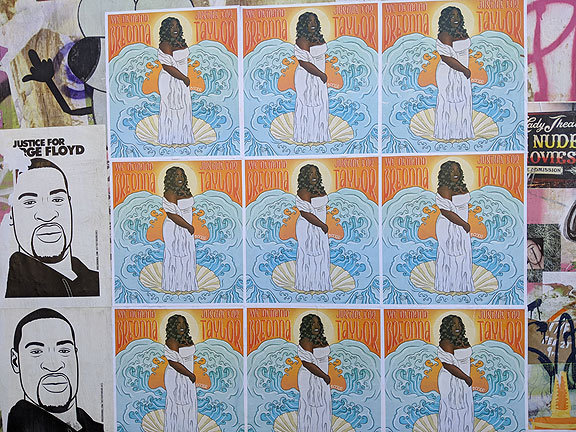
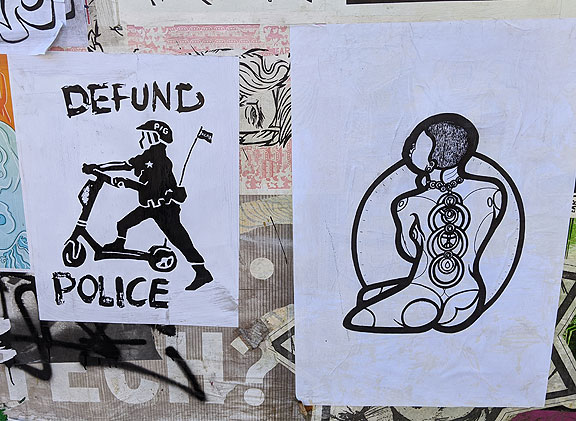
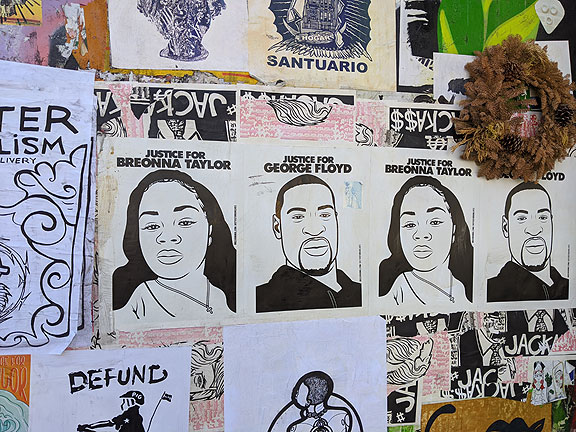
It turns out that the unchallenged commitment to the rule of private property is the bedrock of U.S. liberalism as much as it is of conservative wealth. Walter Johnson, in his latest incredible book (The Broken Heart of America: St. Louis and the Violent History of the United States) goes back to the original Civil War to look at how emerging radical workers movements were redirected towards western expansionism.
In Europe, the land radicals … imagined redistributing to the propertyless the land that belonged to aristocrats; in the United States the land belonged to Indians. European radicalism translated to the American context could become a vexed whites-only liberal imperialism… Taken together, the expropriating, land-distributing laws of 1862 and 1863 were the bill of rights for settler whites and corporate colonists in the nation’s postwar western empire… They aligned the United States with pro-property liberals and settler whites in the West over and against the communists’ critique of property. (pp. 120-121 and 163)
Johnson shows how German communist workers were at the heart of the anti-slavery movement in Missouri before the Civil War, and might have had a lasting impact on the politics of the United States. A key figure was Joseph Weydemeyer, who was a close ally and correspondent of Marx and Engels and a strong proponent of the radical workers’ movement of the Civil War era. He was even elected as City auditor in St. Louis in 1866, “but before the ‘radical auditor’ could fulfill his promise to collect back taxes from war profiteers and reform the city’s property-friendly tax laws, he died in a late-summer outbreak of cholera.” (p. 150) How might the property regime of St. Louis have been changed had he lived?
Writing in his essential work Black Marxism: The Making of the Black Radical Tradition, Cedric Robinson makes a similar point about how the radicalism of European workers was redirected in the North American context:
Eschewing the traditions forming in the European labor movements that would mature into the nineteenth century’s socialisms of the First and Second Internationals, syndicalism and anarchism, the transplanted European workers became preoccupied with the possibility of accumulating wealth and power, of becoming capitalists. (p. 201)
As it turns out, in the long and twisting tale of St. Louis’s urban development, right up to the recent events in Ferguson (a suburb in St. Louis county that was originally set up, like all the suburbs around St. Louis, as a white-only enclave, but has become a majority African American community in the past few decades), the deep structure of white racism was baked in early and reinforced often. Like Robert Moses in New York City, and Justin Herman in San Francisco, St. Louis had its own social engineering urban planner in Harland Bartholomew.
Along with Progressive-era city planners in New York and Chicago, [Harland] Bartholomew outlined a vision in which “zoning is a justifiable use of the police power in the interests of health, safety, and the general welfare,” with “general welfare” defined as enhancing property values in order to support a city’s tax base…It was Bartholomew’s particular malign genius (one historian has termed it a form of “administrative evil”) to be able to translate the terms of existing institutional racism—the “segregation ordinance” and the “restrictive covenant”—into the notionally color-blind terms of liberal white supremacy—“property values” and “the public good.” (p. 292-293)
Bartholomew was also responsible for the ultimate routing of four interstate highways into the heart of St. Louis, not coincidentally displacing historically black neighborhoods in the process. Unlike San Francisco, where intact communities of largely middle- and working-class white people organized opposition to the freeway builders, in St. Louis no organized force was able to stop the highway engineers from gutting dynamic neighborhoods and dispersing concentrations of working class, predominantly African American, residents—the very populations with a history of organizing and resistance to the control of local elites. Walter Johnson concludes his magisterial work with an important reflection on the limits of urban politics, limits we seem to crash into in San Francisco on a regular basis:
The legal constraints, the “development” tools they have spawned, and the negative consequences of their over-misapplication are present in many other cities in the United States: that is why I refer to them as aspects of the history of “structural” racism, rather than of “intentional” racism. They are the product of the misaligned incentives and priorities that characterize any effort to achieve social benefits through economic “development.” The historical patterns of white privilege and black disadvantage, of residential segregation and police harassment, of municipal fealty and corporate subsidy, are old enough, deep enough, and entrenched enough to channel and subvert the actions of even the most well-meaning officials. History and the standing order have left those who seek to govern American cities with only bad choices. (p. 428)
One of Cedric Robinson’s vital contributions to our inquiry is his situating of anti-black racism in the long, pre-capitalist history of Europe. Already well honed systems of hierarchy had been developed during hundreds of years prior to the emergence of capitalism or the globalizing empires that imposed such barbarism on Africa and the Americas.
The Western civilization that burst forth from its medieval quarantine prosecuted its racial sense of social order, its feudal habits of domination, with a vengeance. By the ending of the Middle Ages, racialism was a routine manifestation, finding expression even in the more exotic mental recesses of the maniac and hysterical. (p. 308)
As it came to be manifested in the development of the United States, the deep logic of “otherizing” was so well embedded in the mental universe of European colonists that they could create multiple successive mythologies about themselves while engaging is some of history’s worst crimes.
The American Constitution, the Declaration of Independence, the considerations raised in the Federalist papers were all expressions of the interests and creed of the American bourgeoisie. Soon they were to be augmented by the myths of the Frontier, the paternal Plantation, the competitive capitalism of the Yankee, the courage of the Plainsman, and later supplemented by the tragedy of the War between the States, the Rugged Individual, the excitement of the American Industrial Revolution, the generosity of the Melting Pot. Such were the romantic fictions that came to constitute the social ideology of the nation’s bourgeoisie. There was, though, an even older mythology, one that preceded the development of an American bourgeoisie with its nationalist sentiments and war of independence. Colonialism in America had required a different rationale: the Savage. Conveniently, as we have seen in the previous chapter, English colonialism had had available to it the savagery of the Irish to draw upon. The notion had traveled well. When the need was for labor, the Irish, the poor of the metropole’s cities, the African and the native American were comfortably herded together under the notion of savagery. (p. 186)
Back in today’s San Francisco, we are beset by the global pandemic, smoke-filled skies due to the massive fires started by freak lightning storms two weeks ago (in turn a likely consequence of climate change), and the daily drumbeat of insanity that passes for news and politics in the U.S. Our lives can feel comfortably separated from the harsh racism and blatant stupidity of the heart of the country, but we are fully embedded in that world too. The majority of tech workers have managed to carry on working during the pandemic thanks to remote technologies. And in these technologies many take pride, assuming they are building an infrastructure that somehow transcends the structural racism the pervades the physical world. Ruha Benjamin’s recent book Race After Technology: Abolitionist Tools for the New Jim Code, tells a different story. It turns out that racism is itself a technology that shapes our world, that sorts and stacks people into arbitrary orders from which no amount of meritocratic rhetoric can save us.
…if we consider race as itself a technology, as a means to sort, organize, and design a social structure as well as to understand the durability of race, its consistency and adaptability, we can understand more clearly the literal architecture of power. (p. 91) … … anti-Black racism, whether in search results or in surveillance systems, is not only a symptom or outcome, but a precondition for the fabrication of such technologies. (p. 44) … in the face of discriminatory effects, if those with the power to design differently choose business as usual, then they are perpetuating a racist system whether or not they are card-carrying members of their local chapter of Black Lives Matter. (p. 60) … Innocence and criminality are not objective states of being that can be detected by an algorithm but are created through the interaction of institutions and individuals against the backdrop of a deeply racialized history, in which Blackness is coded as criminal. (p. 124) … … algorithms may not be just a veneer that covers historical fault lines. They also seem to be streamlining discrimination—making it easier to sift, sort, and justify why tomorrow’s workforce continues to be racially stratified. Algorithmic neutrality reproduces algorithmically sustained discrimination. (p. 143)
It’s so easy for people to carry on with the certainty that since they don’t think they are racist, they can’t be doing anything racist. But Benjamin’s book is a helpful reminder that intentions notwithstanding, people and technical systems tend to reproduce hidden assumptions buried in relations, institutions, and landscapes all around us. Towards the end of her book she cries out with anguish for “public outrage over the systematic terror exercised by police in Black neighborhoods with or without the aid of novel technologies.” I assume she’s taken some heart from the wave of protests that have taken center stage since late May. Some of the stirrings of collective revolt among employees in large tech firms have also gained momentum thanks to these social movements. But clearly there’s a long way to go. Tellingly, Benjamin identifies racism not as something simply morally bad, but as an act of theft that affects all of us.
Racism, I often say, is a form of theft. Yes, it has justified the theft of land, labor, and life throughout the centuries. But racism also robs us of our relationships, stealing our capacity to trust one another, ripping away the social fabric, every anonymous post pilfering our ability to build community. (p. 181-182)
I’ve certainly felt this way since I was a child growing up in Oakland at the end of the 1960s and early 1970s. So much possibility was denied me by the tension and conflicts that cascaded down from the society around us to our daily lives in elementary and middle school. People with whom I might have had close(r) friendships, girls I might have dated, places I might have gone, all lost to the barriers we all confronted and mostly failed to overcome. We now face our best, recent opportunity to uproot in a deep way the repetitive and brutalizing dynamics of systemic racism. Let’s not lose this chance, and let’s not minimize how hard this is. Patience, respect, love, and persistence… there’s a much better world ahead, but only if we make it so.
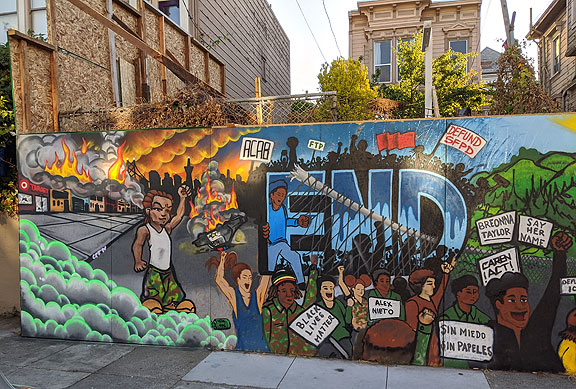
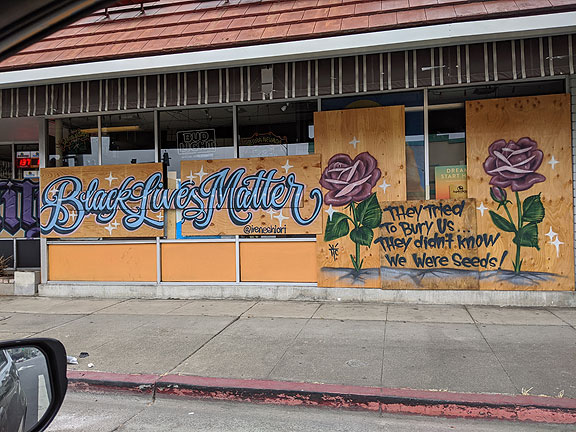
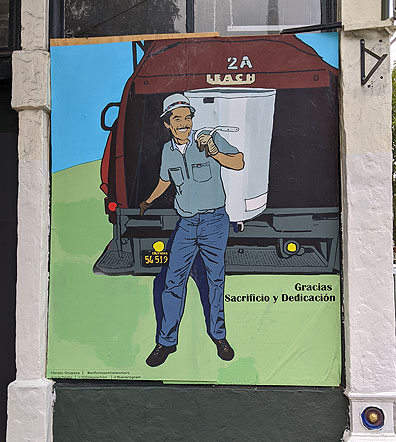
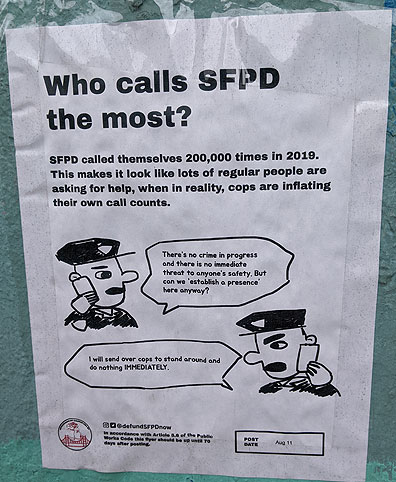
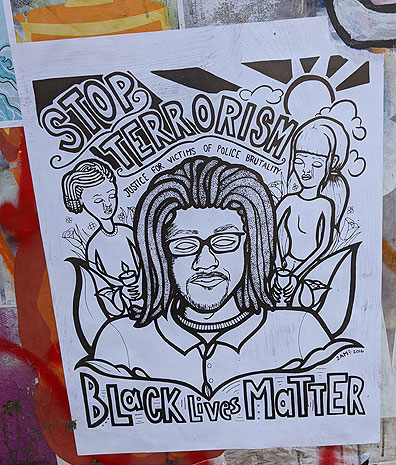
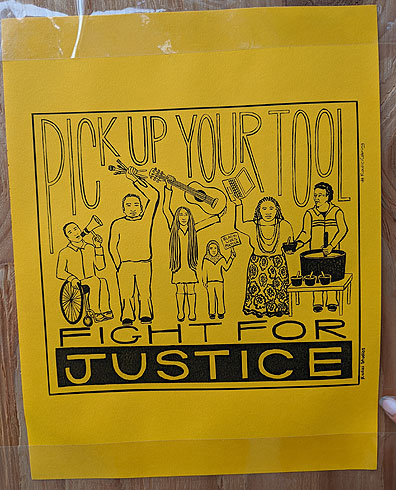
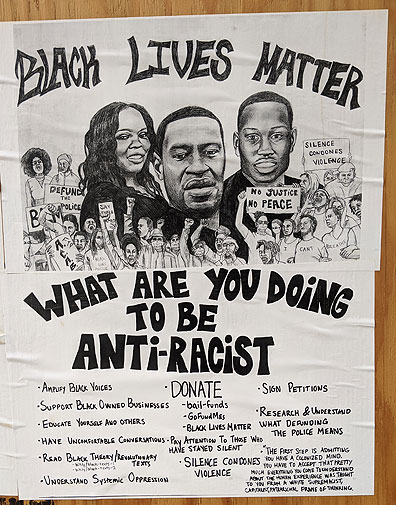
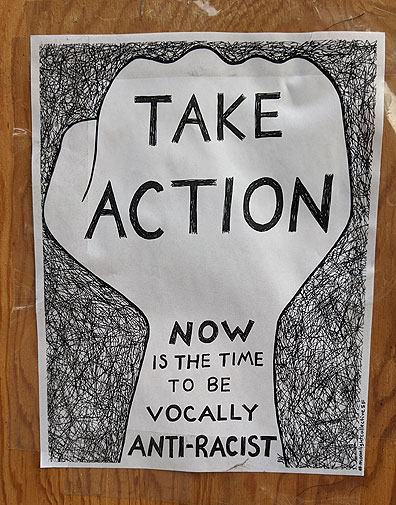












Leave a Reply